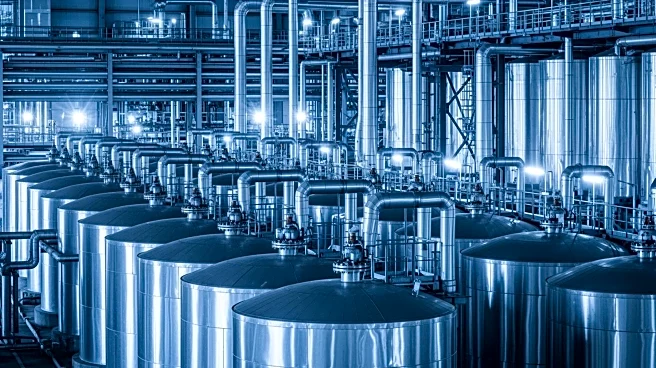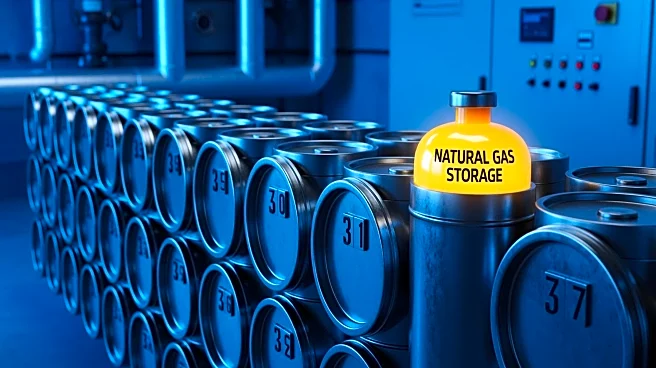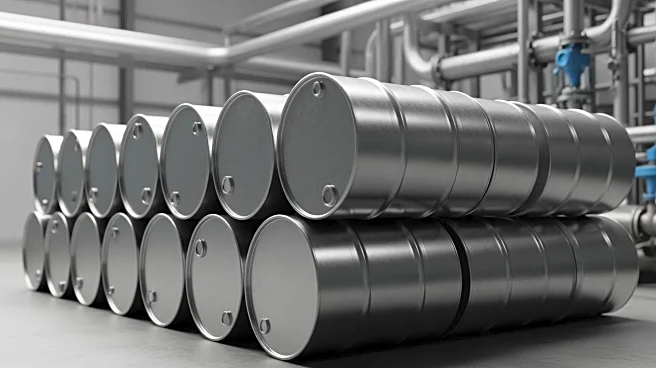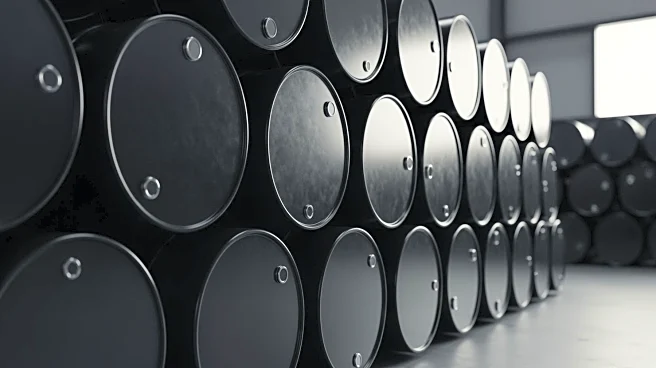What's Happening?
The Energy Information Administration (EIA) has released its latest report on natural gas inventories, indicating a net increase of 87 billion cubic feet (Bcf) as of October 17, 2025. The total working
gas in storage reached 3,808 Bcf, which is 34 Bcf higher than the same period last year and 164 Bcf above the five-year average of 3,644 Bcf. This increase places the total working gas within the historical range for the past five years. The report highlights regional changes, with all areas experiencing a net increase in storage levels. The South Central region saw the largest increase, with a net change of 34 Bcf.
Why It's Important?
The increase in natural gas storage is significant for the energy sector, as it suggests a stable supply heading into the colder months when demand typically rises. Higher storage levels can help mitigate price volatility and ensure consistent supply for heating and electricity generation. This development is crucial for industries reliant on natural gas, including manufacturing and utilities, as it may influence market prices and operational costs. Additionally, the data provides insights into regional storage capacities, which can impact local energy strategies and infrastructure planning.
What's Next?
As the winter season approaches, stakeholders in the energy market will closely monitor storage levels and demand forecasts to adjust their strategies accordingly. The EIA's future reports will be pivotal in assessing whether current storage levels can meet anticipated demand spikes. Energy companies may also explore opportunities to optimize storage and distribution networks to capitalize on the current inventory levels.
Beyond the Headlines
The increase in natural gas storage may also have environmental implications, as it could reduce the need for alternative energy sources that have higher emissions. This aligns with broader efforts to transition to cleaner energy solutions and improve energy efficiency across sectors.











